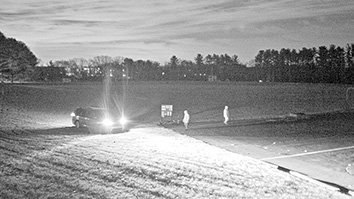Citation
Cobb, C. L.; Blanco, M. Modeling mass and density distribution effects on the performance of co-extruded electrodes for high energy density lithium-ion batteries. Journal of Power Sources. 2014 March 1; 249: 357-366.
Abstract
Utilizing an existing macro-homogeneous porous electrode model developed by John Newman, this paper aims to explore the potential energy density gains which can be realized in lithium-ion battery electrodes fabricated with co-extrusion printing technology. This paper conducts an analysis on two-dimensional electrode cross-sections and presents the electrochemical performance results, including calculated volumetric energy capacity for a general class of lithium cobalt oxide (LiCoO2) co-extruded cathodes, in the presence of a lithium metal anode, polymer separator and liquid ethylene carbonate, propylene carbonate, and dimethyl carbonate (EC:PC:DMC ) electrolyte. The impact of structured electrodes on cell performance is investigated by varying the physical distribution of a fixed amount of cathode mass over a space of dimensions which can be fabricated by co-extrusion. By systematically varying the thickness and aspect ratio of the electrode structures, we present an optimal subset of geometries and design rules for co-extruded geometries. Modeling results demonstrate that ultra-thick LiCoO2 electrodes, on the order of 150-300m, can garner a substantial improvement in material utilization and in turn capacity through electrolyte channels and fine width electrode pillars which are 25-100m wide.


